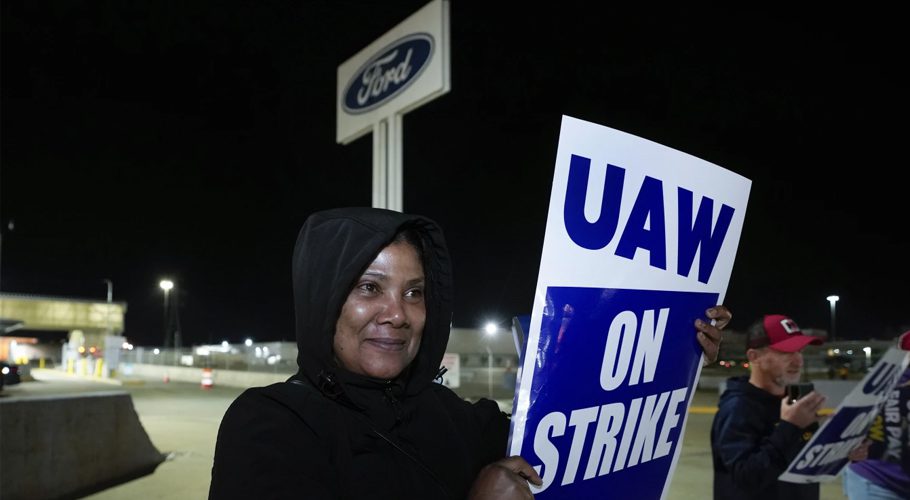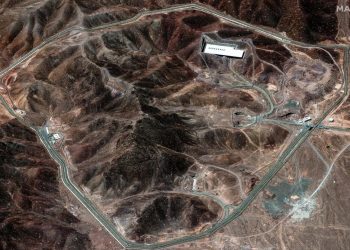About 13,000 auto workers at General Motors, Ford and Stellantis have walked off the job at three targeted factories after their union leaders couldn’t reach a deal with Detroit’s automakers.
The United Auto Workers union is seeking big raises and better benefits from General Motors, Ford and Stellantis. They want to get back concessions that the workers made years ago, when the companies were in financial trouble.
A small percentage of the union’s 146,000 members walked off the job at a GM assembly plant in Wentzville, Missouri; a Ford factory in Wayne, Michigan, near Detroit; and a Stellantis Jeep plant in Toledo, Ohio, at 11:59 p.m. Eastern time on Thursday.
WHAT DO WORKERS WANT?
The union is asking for 36% raises in general pay over four years — a top-scale assembly plant worker gets about $32 an hour now. In addition, the UAW has demanded an end to varying tiers of wages for factory jobs; a 32-hour week with 40 hours of pay; the restoration of traditional defined-benefit pensions for new hires who now receive only 401(k)-style retirement plans; and a return of cost-of-living pay raises, among other benefits.
The automakers have moved closer to the UAW’s demands on wages, but a big gulf remains.
On Thursday, GM said it boosted its offer to a 20% wage increase, including 10% in the first year, over four years. CEO Mary Barra said in a letter to employees, “We are working with urgency and have proposed yet another increasingly strong offer with the goal of reaching an agreement tonight.”
Ford is also offering a 20% boost in pay. The last known offer from Stellantis (formerly Fiat Chrysler) was 17.5%, but the company has since made another.
WHAT HAPPENS NEXT?
Fain said there will be no negotiations Friday because union leaders will join rank-and-file workers on picket lines.
The union could pick more plants to strike in the coming days, and it all depends on progress — or lack of it — at the bargaining table, the UAW president says.
WILL A STRIKE CAUSE CAR PRICES TO RISE?
Eventually. GM, Ford and Stellantis have been running their factories around the clock to build up supplies on dealer lots. But that’s also putting more money into the pockets of UAW members and strengthening their financial cushions.
At the end of August, the three automakers collectively had enough vehicles to last for 70 days. After that, they would run short. Buyers who need vehicles would likely go to nonunion competitors, who would be able to charge them more.
Vehicles are already scarce when compared with the years before the pandemic, which touched off a global shortage of computer chips that hobbled auto factories.


































